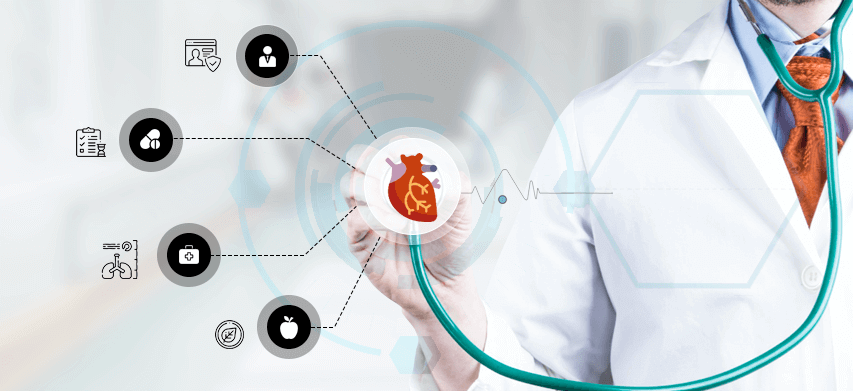The Internet of Things (IoT) is transforming industries worldwide, and healthcare is no exception. IoT connects devices, gathers data, and provides real-time insights, making healthcare more efficient, personalized, and accessible. However, despite its many benefits, adopting IoT in healthcare comes with significant challenges. For IoT to fully realize its potential in healthcare, these challenges must be addressed. In this blog, Java India explores the promise of IoT in healthcare, the obstacles in its path, and strategies to overcome them.
The Promise of IoT in Healthcare
IoT has a broad range of applications in healthcare. From remote patient monitoring to smart hospitals, IoT is making a significant impact. By connecting medical devices, wearables, and other health-related technologies to the internet, IoT enables continuous patient monitoring, real-time data analysis, and better decision-making. Here are some of the key benefits:
Enhanced Patient Care:
IoT devices monitor patients’ vital signs in real-time. This allows healthcare providers to detect abnormalities early and intervene quickly. As a result, patient outcomes improve, and the risk of complications decreases.
Improved Operational Efficiency:
IoT streamlines hospital operations by automating tasks like inventory management, equipment tracking, and patient flow monitoring. This reduces the administrative burden and allows healthcare staff to focus more on patient care.
Personalized Treatment:
IoT helps healthcare providers collect and analyze data from various sources, such as wearables and medical devices. This data allows for treatments to be tailored to individual patients, making them more effective and improving patient satisfaction.
Remote Healthcare:
With IoT, remote patient monitoring becomes a reality. Healthcare providers can track patients’ health from a distance, reducing the need for frequent hospital visits and ensuring continuous care, especially for patients with chronic conditions.
Despite these benefits, there are challenges that need to be overcome to fully integrate IoT into healthcare.
Key Challenges in IoT Healthcare Applications
Data Security and Privacy Concerns:
One of the biggest challenges in using IoT in healthcare is ensuring data security and privacy. Healthcare data is highly sensitive, and any breach can have serious consequences for patients and providers. IoT devices, often connected to the internet, are vulnerable to cyberattacks. Therefore, robust security measures are crucial.
Interoperability Issues:
Healthcare systems often use various devices and software platforms that are not designed to work together. This lack of interoperability leads to data silos, where information is trapped in one system and cannot be easily shared or accessed by others. Developing standards that allow different devices and systems to communicate seamlessly is essential.
Data Overload:
While IoT allows for the collection of vast amounts of data, managing and analyzing this data can be overwhelming. Healthcare providers may struggle to sift through the noise to find actionable insights. This can lead to information overload and decision fatigue. Advanced analytics tools and AI-powered solutions can help address this challenge.
Regulatory and Compliance Challenges:
Healthcare is a highly regulated industry. Any technology that collects, stores, or transmits patient data must comply with strict regulations like HIPAA (Health Insurance Portability and Accountability Act) in the United States. Navigating these regulations can be complex and time-consuming, posing a barrier to the widespread adoption of IoT in healthcare.
High Implementation Costs:
The initial costs of implementing IoT in healthcare can be high, especially for smaller healthcare providers with limited budgets. The expenses associated with purchasing IoT devices, integrating them into existing systems, and training staff can be prohibitive. However, these costs must be weighed against the long-term benefits of improved patient care and operational efficiency.
Overcoming the Challenges: Strategies for Success
Implementing Robust Security Measures:
To address data security and privacy concerns, healthcare providers must implement strong security measures at every stage of IoT deployment. This includes using encryption to protect data in transit and at rest, implementing strong authentication protocols, and regularly updating software to address vulnerabilities. Additionally, healthcare organizations should conduct regular security audits to identify and mitigate potential risks.
Promoting Interoperability:
To overcome interoperability challenges, healthcare providers and IoT vendors must collaborate to develop and adopt industry-wide standards. Organizations like HL7 and the Open Connectivity Foundation (OCF) are working to create standardized protocols that enable seamless communication between different devices and systems. By promoting interoperability, healthcare providers can ensure that IoT devices work together to provide a complete and accurate picture of a patient’s health.
Leveraging Advanced Analytics and AI:
To manage the vast amounts of data generated by IoT devices, healthcare providers should invest in advanced analytics and AI-powered tools. These technologies can help filter out irrelevant data, identify patterns, and provide actionable insights that support decision-making. For example, AI algorithms can analyze data from wearable devices to predict potential health issues before they become critical, allowing for early intervention.
Navigating Regulatory Compliance:
Healthcare providers must stay informed about the regulatory requirements governing IoT in healthcare and work closely with legal experts to ensure compliance. This includes understanding the implications of regulations like HIPAA and GDPR (General Data Protection Regulation) and implementing measures to protect patient data accordingly. Additionally, IoT vendors should design their products with compliance in mind, making it easier for healthcare providers to adhere to regulatory standards.
Exploring Cost-Effective Solutions:
While the initial costs of IoT implementation can be high, healthcare providers can explore cost-effective solutions to make adoption more feasible. For example, cloud-based IoT platforms can reduce the need for expensive on-premises infrastructure, while open-source software can lower licensing costs. Additionally, healthcare providers can start with pilot projects to demonstrate the value of IoT before scaling up to full implementation.
The Future of IoT in Healthcare
Despite the challenges, the future of IoT in healthcare is promising. As technology continues to advance, we can expect to see even more innovative applications of IoT in the healthcare sector. Some potential future developments include:
AI-Powered Diagnostics:
AI and IoT will work together to provide more accurate and efficient diagnostics. For example, IoT devices could continuously monitor patients’ health, while AI algorithms analyze the data in real-time to detect early signs of disease. This could lead to faster diagnoses and more effective treatments.
Smart Hospitals:
The concept of smart hospitals, where IoT devices are integrated throughout the facility to optimize operations and patient care, will become more prevalent. Smart hospitals can use IoT to monitor patient vitals, manage resources, and even control lighting and temperature to create a more comfortable environment for patients.
Remote Surgery:
IoT could enable remote surgery, where surgeons perform procedures on patients in different locations using robotic systems connected to the internet. This could make specialized care more accessible to patients in remote or underserved areas.
Personalized Medicine:
IoT will play a key role in the development of personalized medicine, where treatments are tailored to an individual’s genetic makeup and lifestyle. By collecting and analyzing data from wearable devices, IoT can help healthcare providers create personalized treatment plans that improve patient outcomes.
Conclusion
IoT has the potential to transform healthcare by improving patient care, enhancing operational efficiency, and enabling personalized treatment. However, to fully realize this potential, healthcare providers must address the challenges associated with IoT implementation, such as data security, interoperability, and regulatory compliance.
At Java India, we are committed to helping healthcare providers navigate these challenges and harness the power of IoT for future applications. Our expertise in IoT development, combined with our deep understanding of the healthcare industry, allows us to create innovative solutions that drive better patient outcomes and operational efficiency.
As the healthcare industry continues to evolve, IoT will play an increasingly important role in shaping the future of care delivery. By overcoming the challenges and embracing the opportunities that IoT presents, healthcare providers can ensure they are well-positioned to meet the needs of patients today and in the future. Contact Java India to learn more about how we can help you leverage IoT for your healthcare applications.

